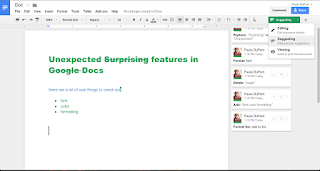I have no lesson plan. What shall I do? Part 1.
It may sound like a nightmare for the teacher, if you have to stand for another teacher in some other class. But it can be even worse if it's not supposed to be an English class, but some other like History, Native language class, Literature, IT or maybe PE. What do you usually do in such cases? I usually become very, VERY unhappy.
In the recent school year two times I had to teach IT and Polish (which is not my native language unlike my students, so you understand). I used some conversational methods and things that students had with them or could make at the lesson. And it worked really well to my great surprise. But only recently I've found out a new teaching method which core idea is conversation and things from the immediate surrounding that is everything that students can bring or have with them or see around them. That spoken English lesson is nothing but
Dogme teaching method or Dogme teaching (conversation driven teaching).
What is it? It's a methodology and a movement. Dogme should be done using only resources that teachers and students bring to the class and whatever happens to be in the classroom. Students come with their English, not for English.
Sounds good. But how does it work? There are three main principles:
*language should work because communication develops social interaction
*student-produced materials are preferable than published textbooks
*activities lead to communication
Here are some of the activities of Dogme teaching that you can use at the lesson without or with little preparation.
1.
DISAPPEARING TEXT
Choose a short text. Make a large copy of it or write it on the board so that the whole class could read it. Tell the class, they need to copy it down as accurately as possible. But they will only be able to see it for one minute. Display the text for 1 minute, then close it down. The class may compare their results. Then you let them see the text again but only for thirty seconds. From
memory they make changes before comparing with the partner.
Then ask one pare to dictate what they think is the correct copy. Write it on the board and then display the original text and discuss the differences.
2.
HANDS UP

Your pupils draw the outlines of their two hands on a piece of paper. Each hand will represent some category and the opposite category. Qualities in people they like and don't like, something they like/think good and something they don't. They may use dictionaries if there is a need for it. On the board you write the sentences to complete with their words.
In pairs students compare their 'hands', looking for similarities and differences.
You can also write on the board top 5 'left hands' and top 5 'right hands' or make a kind of class ranking.
3. DESERT ISLAND

Tell your student that they are going on a desert island. They are allowed one kind of food/drink, one book and one CD. Surely, you understand that you can replace the categories by what suits best your lesson. Instead of things they may take people from their surrounding to the desert Island, or famous people.
Everyone writes down their three choices on a slip of paper. You shake the pieces and redistribute them among the pupils. Pupils have to find the author of the note asking different questions. They are allowed to move around the classroom asking questions. When they find them, they ask them about their choices.
4. TWIN TRIPS
Many classrooms have maps as a decoration. Why not use it? It can be a map of the city, country or even of the world. A student with the closed eyes points with a pen at the random place.
What can they do when they know already the place of destination?
*Write a postcard or SMS from their location
*Tell the class something about the surroundings
*Give instructions how to reach it
*You may take postcards/messages/whatever, redistribute among other students and the latter have to guess who is it from/find the place on the map. They can make up a story how they got home (interview or writing down 5 facts about their trip).
In my second part I'm going to write about other useful Dogme activities for a conversation in English.
Read
PART II here.





























